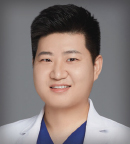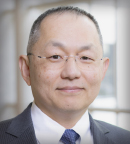Neoadjuvant therapy that combines chemotherapy, radiotherapy, and the investigational PD-1 inhibitor sintilimab led to a significantly higher pathologic complete response rate in patients with locally advanced esophageal squamous cell carcinoma, according to data presented at the 2025 ASCO Gastrointestinal Cancers Symposium.1
Preliminary results from the multicenter phase III SCIENCE trial conducted in China revealed that neoadjuvant chemoradiotherapy combined with sintilimab achieved a pathologic complete rate of 60%, surpassing those for neoadjuvant chemoradiotherapy (47.3%) and neoadjuvant chemotherapy plus sintilimab (13%). Authors of the study emphasized that this immunotherapy-based approach may improve pathologic outcomes without substantially amplifying surgical risk.

Xuefeng Leng, MD, PhD
“Neoadjuvant chemoradiotherapy with immunotherapy has the potential to become the new standard of care in the near future,” said lead study author Xuefeng Leng, MD, PhD, Vice Director, Department of Thoracic Surgery, Sichuan Cancer Hospital and Institute, Chengdu, China.
Background
As Dr. Leng explained, esophageal cancer ranks seventh worldwide in terms of incidence and sixth in cancer-related mortality. The disease has an especially high burden in China, where more than half of global cases occur.
In East Asia, both neoadjuvant chemoradiotherapy and chemotherapy are considered standard treatments for resectable locally advanced esophageal squamous cell carcinoma. Western countries typically rely on neoadjuvant chemoradiotherapy or perioperative chemotherapy along with surgery, said Dr. Leng, which reflects differences in practice patterns and tumor biology.
According to Dr. Leng, integrating immune checkpoint inhibitors into earlier treatment lines, such as in the neoadjuvant setting, has shown promise. However, key questions persist as to which neoadjuvant strategy yields the best outcomes, how immunotherapy may synergize with chemoradiotherapy, and how any additional toxicities may be managed while preserving surgical feasibility.
Study Methods
The SCIENCE trial enrolled 146 previously untreated patients with thoracic esophageal squamous cell carcinoma who were clinically staged as locally advanced (cT1 N2–3 M0 or cT2–4a N0–3 M0). All patients were deemed eligible for surgical resection based on multidisciplinary assessment.
Participants were randomly assigned to 3 groups at 14 centers in China: sintilimab plus neoadjuvant chemotherapy (nab-paclitaxel and carboplatin; group A; n = 46); sintilimab plus neoadjuvant chemoradiotherapy (group B; n = 45); or neoadjuvant chemoradiotherapy alone (group C; n = 55).
Neoadjuvant therapy was followed by surgical resection, typically performed 6 to 8 weeks after completion of preoperative treatment. After surgery, patients received additional management based on pathologic results and resection status, including postoperative maintenance with sintilimab for those with a complete resection (R0), or if recommended.
The co-primary endpoints were pathologic complete response and event-free survival. Secondary endpoints included surgical outcomes, toxicity, and other pathologic measures of tumor regression.
Key Results
As Dr. Leng reported, interim analysis showed a 60% pathologic complete response rate in group B compared with 13% in group A. Group C had a pathologic complete response rate of 47.3%.
“The added benefit of sintilimab in combination with chemoradiotherapy stands out, offering a 60% pathologic complete rate that has not frequently been observed in esophageal squamous cell carcinoma,” said Dr. Leng. “An evaluation of tumor regression grades also demonstrated notable regression in most [of these] patients in group B, supporting the synergy between PD-1 blockade and concurrent chemotherapy and radiotherapy.”
According to Dr. Leng, resection status was high, and most surgeries were carried out via minimally invasive procedures. Dr. Leng also highlighted that the inclusion of multiple high-volume centers in the trial likely contributed to the relatively low complication rates observed after surgery.
Safety Profile
Treatment-emergent adverse events were more common in groups B and C than in group A, said Dr. Leng, which is expected with these radiation-based approaches.
Hematologic toxicities such as lymphopenia, leukopenia, and neutropenia also occurred more frequently in groups B and C. The rate of grade ≥ 3 lymphopenia was 11.1% in group B, compared with 30.9% in group C and 0% in group A. Although Dr. Leng pointed out the potentially protective effect of immunotherapy against radiation therapy–induced lymphopenia, more data and analyses are needed to confirm this observation.
KEY POINTS
- In the phase III SCIENCE trial, treatment with neoadjuvant chemoradiotherapy plus the PD-1 inhibitor sintilimab led to a 60% pathologic complete response rate in patients with locally advanced esophageal squamous cell carcinoma, outperforming both chemoradiotherapy alone (47.3%) and chemotherapy plus sintilimab (13%).
- Despite higher incidences of hematologic toxicities in the chemoradiotherapy groups, surgical complications—including anastomotic leakage and pulmonary infections—were manageable, and no perioperative deaths were reported in any treatment group.
Surgical complications were generally manageable, said Dr. Leng, who noted low anastomotic leak rates (0% in group A; 2.2% in group B; and 5.5% in group C) but a high incidence of pulmonary infections in all groups. However, these infections were frequently mild or asymptomatic aside from radiographic findings, he noted.
“No perioperative deaths were reported, suggesting that adding PD-1 blockade to chemoradiotherapy did not compromise surgical safety in this setting,” said Dr. Leng.
Further follow-up will be critical to assess whether these high pathologic complete response rates translate into prolonged survival, Dr. Leng concluded.
DISCLOSURE: Dr. Leng reported no conflicts of interest.
REFERENCE
1. Leng X, He W, Lyu J, et al: Preliminary results from the multicenter, randomized phase III trial (SCIENCE): Comparing chemotherapy plus sintilimab and chemoradiotherapy plus sintilimab versus chemoradiotherapy for neoadjuvant treatment in resectable locally advanced esophageal squamous cell carcinoma. 2025 ASCO Gastrointestinal Cancers Symposium. Abstract LBA329. Presented January 23, 2025.
EXPERT POINT OF VIEW
Invited discussant Harry H. Yoon, MD, MHS, Professor of Oncology at the Mayo Clinic, Rochester, Minnesota, emphasized that the SCIENCE trial contributes further momentum to neoadjuvant immunotherapy research in esophageal squamous cell carcinoma but urged caution about interpreting early results.

Harry H. Yoon, MD, MHS
“The addition of sintilimab to neoadjuvant chemoradiotherapy improved the pathologic complete response in resectable esophageal squamous cancer, and this promising result builds on prior data,” Dr. Yoon explained. “But caution is needed, because it remains unclear to what degree an improved pathologic complete response rate translates into improved survival.”
Dr. Yoon noted that a key comparison should be made between groups B (neoadjuvant chemoradiotherapy plus sintilimab) and C (neoadjuvant chemoradiotherapy alone), which directly evaluates the question of whether adding immunotherapy may increase the pathologic complete response rate. “The 13–percentage point improvement seen in [group] B is encouraging, but more mature endpoints—namely, event-free survival—will determine the real impact on long-term outcomes,” he commented.
Dr. Yoon drew parallels to other neoadjuvant immunotherapy trials in esophageal squamous cancer, such as ESCORT-NEO and a study at a hospital in Henan, China, which also showed pathologic complete response gains but inconclusive or immature survival data.
“[Although] the SCIENCE findings are promising, additional follow-up is needed to confirm their potential impact on long-term survival in esophageal squamous cell carcinoma,” Dr. Yoon concluded.
DISCLOSURE: Dr. Yoon reported financial relationships with Amgen, Astellas Scientific and Medical Affairs Inc, AstraZeneca, BeiGene, Bristol Myers Squibb, Elevation Oncology, Merck, Novartis, Zymeworks, and CARsgen Therapeutics.

